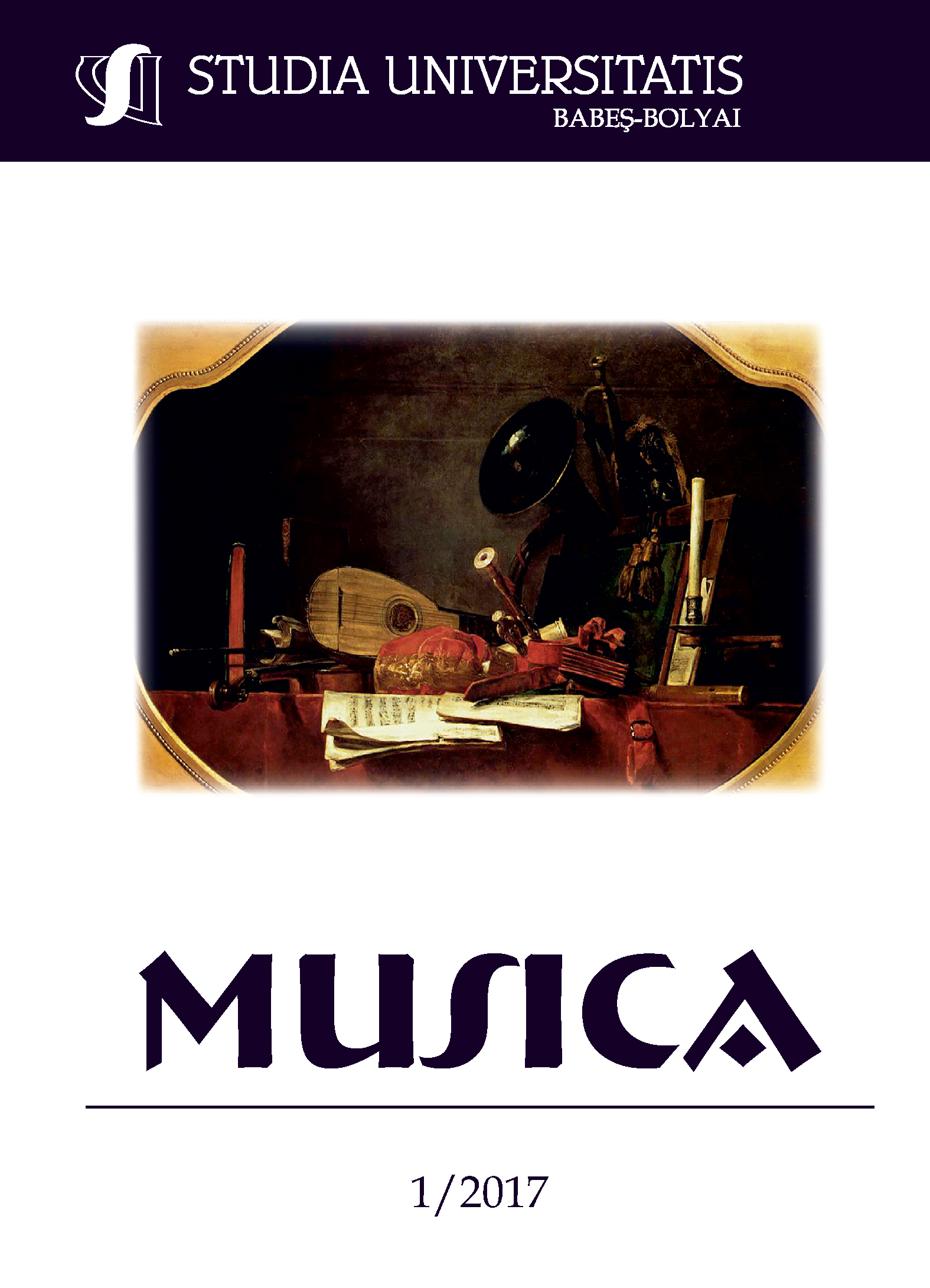KASTRATEN, DIE PRIMI UOMINI DER EUROPÄISCHEN OPERNBÜHNEN
DOI:
https://doi.org/10.24193/subbmusica.2017.1.03Keywords:
castrato, primo uomo, sacrifice, opera seria, opera composers, castrato roles, pants role, falsettist, countertenor.Abstract
Castratos, as the primo uomo-s of the baroque operatic Stages. This paper presents the importance of the castrato-phenomenon in the history of the European music. From the humiliation and punishment of the defeated, castration became first in the Byzantine culture (from the 5th century) and long after in Italy (from the 16th century) a sacrifice and an offering for art and music. Being forbidden, but tolerated and even supported, castration for music became the most unnatural but also the most supernatural human phenomenon, used for artistic amusement and delight. Starting the singing career in catholic churches, they became the most adored and celebrated primo uomo-s of the renowned European operatic stages. Their presence transformed the genre of opera, and their singing technique (ben cantare) lead up to the bel canto style of the Romanticism. The revival of the baroque opera (for ex. the operas of Händel, who employed for these roles more than twenty Italian castratos) brings up the problem of finding the adequate singer-type, who could “replace” their roles.
References
Barbier, Petrick, The World of the Castrati, Souvenir Press, London, 1996.
Berry, Helen, The Castrato and His Wife, Oxford University Press, 2011.
Boyden, Matthew, Az opera kézikönyve (Handbuch der Oper), Park Könyvkiadó, Budapest, 2009.
Breda, Sonja, The Paradox of the Castrato – in: PDXScholar, Portland State University, 2012 – http://pdxscholar.library.pdx.edu/younghistorians/2012/oralpres/7 (2016. 04. 07)
Csobó, Péter György, Il Castrato – A testcsonkítás gender-alapú, zenetörténeti és médiaelméleti aspektusairól (Il Castrato - über die musikhistorische und medientheoretische Aspekte der Kastration auf Gender-Basis) – in: A vörös postakocsi, Nyíregyháza, 2008, S. 33-46. http://www.nyf.hu/vpkocsi/letoltheto_dokumentumok/2008_tavasz/033-046-csobo-peter.pdf (2016. 06. 05)
DeMarco, Laura E., The Fact of the Castrato and the Myth of the Countertenor – in: The Musical Quarterly, no. 86 (1), Oxford University Press, 2002, S. 174-185.
Feldman, Martha, The Castrato: reflections on natures and kinds, University of California Press, 2015.
Finucci, Valeria, The Manly Masquerade, Duke University Press, London, 2003.
Jacobs, René, There are no castratos left: what now? – in: Arias for Farinelli CD-Booklet, LC 7045 – MG 501778, Harmonia Mundi, Arles, 2002, S. 37-34.
Koutsiaris, Epameinondas A. – Alamanis, Christos – Eftychiadis, Aristotle – Zervas, Anastasios, Castrati Singers: Surgery for Religion and Art – in: IJAE (Italian Journal of Anatomy and Embryology), vol. 119, nr. 2, 2014, S. 106-110 – www.fupress.net/index.php/ijae/article/download/15136/14077 (2016. 09. 06.)
LaRue, Steven, Händel and His Singers: The Creation of the Royal Academy Operas, 1720-1728, Clarendon Press, Oxford, 1995.
Melicow, Meyer, Castrati Singers and the Lost “Cords” – in: Bulletin of the New York Academy of Medicine, vol. 59(8), 1983, S. 744-764 – https://www.ncbi.nlm.nih.gov/pmc/articles/PMC1911686/pdf/bullnyacadmed00084-0058.pdf (2016. 05. 03.)
Milner, Anthony, The Sacred Capons – in: The Musical Times 114, London, 1973, S. 250-252.
Ortkemper, Hubert, Engel wider Willen. Die Welt der Kastraten. Eine andere Operngeschichte. Dtv/Bärenreiter, München, 1995.
Palisca, Claude V., Barokk zene (Die Musik des Barock), Zeneműkiadó Verlag, Budapest, 1976.
Pelle János, Eunuchok keleten (Eunuchen im Osten) – in: Népszava (2005. febr. 19.) – http://nepszava.hu/cikk/240963-eunuchok-keleten (2016. 06. 04.)
Potter, John, The tenor – castrato connection, 1760-1860 – in: Early Music (Oxford Journals – Arts & Humanities), nr. 35/1, Oxford, 2007, S. 97-112.
Robertson-Kirkland, Brianna, The Silencing of Bel Canto – in: Issue 21 – Silenced Voices, 2014 – http://www.gla.ac.uk/media/media_307347_en.pdf (2016. 08. 18.)
Rosselli, John, The Castrati as a Professional Group and a Social Phenomenon, 1550-1850 – in: Acta Musicologica, vol. 60/2, Basel, 1988, S. 143-179.
Rosselli, John, Singers of Italian Opera – The History of a Profession, Cambridge University Press, 1992.
Rosselli, John, Castrato – in: The New Grove Dictionary of Music and Musicians, Macmillan Publishers, London, 2001.
Scholz, Piotr, Eunuchs and Castrati, Markus Wiener Publishers, Princeton, 2001.
Sowle, Jennifer, The Castrato Sacrifice: Was it Justified? University of North Texas, 2006.
Stanley, John, Klasszikus zene (Klassische Musik). Kossuth Verlag, Budapest, 2006.
Taylor, Gary, Castration – An Abbreviated History of Western Manhood, Routledge Publishing, New York and London, 2000.
Tuchel, Susan, Kastration im Mittelalter, Droste Verlag, Düsseldorf, 1998.
Vanherle, Francisca Paula, Castrati: The History of an Extraordinary Vocal Phenomenon and a Case Study of Handel’s Opera Roles for Castrati Written for the First Royal Academy of Music (1720-1728), PhD-Dissertation, University of Texas at Austin, 2002.
Wörner, Karl H., A zene története (Die Geschichte der Musik), Vivace Zenei Antikvárium és Kiadó, Budapest, 2007.
Downloads
Published
How to Cite
Issue
Section
License
Copyright (c) 2017 Studia Universitatis Babeș-Bolyai Musica

This work is licensed under a Creative Commons Attribution-NonCommercial-NoDerivatives 4.0 International License.






